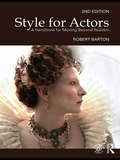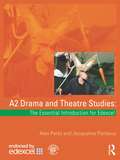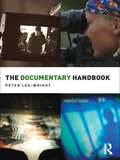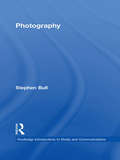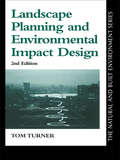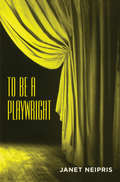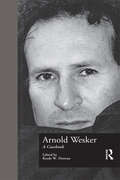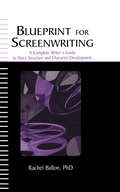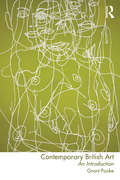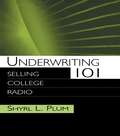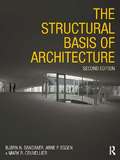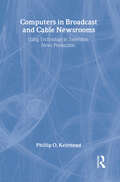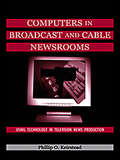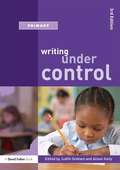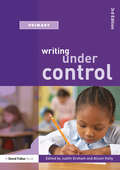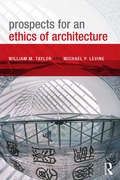- Table View
- List View
Style For Actors 2nd Edition: A Handbook for Moving Beyond Realism
by Robert Barton"Style is a journey from tourist to native. It is living in the world of the play, not just visiting it." - from Chapter One Anyone who has ever struggled with capes, fans, swords, doublets and crinolines should make Style for Actors 2nd Edition their constant companion. Robert Barton has completely updated his award winning handbook for the 21st century with contemporary references and up-to-date illustrations. This is the definitive guide to roles in historical drama. The past is a foreign country, and this outstanding book is concerned with exploring it from the actor’s point of view. Specific guides range from Greek, Elizabethan, Restoration and Georgian theatre to more contemporary stylings, including Futurism, Surrealism and Postmodernism. Barton takes great care to present the actor with the roles and genres that will most commonly confront them. His analysis moves from entire genres to specific scenes and characters. A huge resource of nearly 150 practical exercises helps a newfound understanding of style to make the leap from page to performance.
A2 Drama and Theatre Studies: The Essential Introduction for Edexcel
by Alan Perks Jacqueline PorteousA2 Drama and Theatre Studies: The Essential Introduction for Edexcel builds on the skills developed during the AS year to provide clear and informative guidance to Units 3 and 4 of the specification. The textbook provides further information on rehearsing, performing, directing and textual analysis, together with new material on deconstructing a script, devising theatre and preparing for the final examination. Features of the text include: overviews of specification and assessment requirements written and practical exercises a glossary of useful words and terms in-depth analysis of the three key plays – Dr Faustus, Lysistrata and Woyzeck extension exercises to stretch the more able student worked examples to illustrate best practice sources for further study advice on study after A Level. Written by a chief examiner and a principal moderator, this book and its companion volume for AS Level offer informed and supportive exercises to ensure that students reach their maximum potential in achieving A Level success.
A2 Drama and Theatre Studies: The Essential Introduction for Edexcel
by Alan Perks Jacqueline PorteousA2 Drama and Theatre Studies: The Essential Introduction for Edexcel builds on the skills developed during the AS year to provide clear and informative guidance to Units 3 and 4 of the specification. The textbook provides further information on rehearsing, performing, directing and textual analysis, together with new material on deconstructing a script, devising theatre and preparing for the final examination. Features of the text include: overviews of specification and assessment requirements written and practical exercises a glossary of useful words and terms in-depth analysis of the three key plays – Dr Faustus, Lysistrata and Woyzeck extension exercises to stretch the more able student worked examples to illustrate best practice sources for further study advice on study after A Level. Written by a chief examiner and a principal moderator, this book and its companion volume for AS Level offer informed and supportive exercises to ensure that students reach their maximum potential in achieving A Level success.
The Documentary Handbook (Media Practice)
by Peter Lee-Wright'The Documentary Handbook is mandatory reading for those who want a critical understanding of the place of factual formats in today’s exploding television and media industry, as well as expert guidance in complex craft skills in order to fully participate. The practical advice and wisdom here is second to none.' – Tony Steyger, Principal Lecturer, Southampton Solent University, UK The Documentary Handbook is a critical introduction to the documentary film, its theory and changing practices. The book charts the evolution of documentary from screen art to core television genre, its metamorphosis into many different types of factual TV programme and its current emergence in forms of new media. It analyses those pathways and the transformation of means of production through economic, technical and editorial changes. The Documentary Handbook explains the documentary process, skills and job specifications for everyone from industry entrants to senior personnel, and shows how the industrial evolution of television has relocated the powers and principles of decision-making. Through the use of professional Expert Briefings it gives practical pointers about programme-making, from research, developing and pitching programme ideas to their production and delivery through a fast-evolving multi-platform universe.
Photography
by Stephen BullPhotography explores the photograph in the twenty-first century and its importance as a media form. Stephen Bull considers our media-saturated society and the place of photography in everyday life, introducing the theories used to analyse photographs and exploring the impact of digital technology. The text is split into short, accessible chapters on the broad themes central to the study and analysis of photography, and key issues are explained and applied to visual examples in each chapter. Topics covered include: the identity of photography the meanings of photographs photography for sale snapshots the photograph as document photography as art photographs in fashion photography and celebrity. Photography is an up-to-date, clear and comprehensive introduction to debates about photography now and is particularly useful to media, photography and visual culture students.
Photography
by Stephen BullPhotography explores the photograph in the twenty-first century and its importance as a media form. Stephen Bull considers our media-saturated society and the place of photography in everyday life, introducing the theories used to analyse photographs and exploring the impact of digital technology. The text is split into short, accessible chapters on the broad themes central to the study and analysis of photography, and key issues are explained and applied to visual examples in each chapter. Topics covered include: the identity of photography the meanings of photographs photography for sale snapshots the photograph as document photography as art photographs in fashion photography and celebrity. Photography is an up-to-date, clear and comprehensive introduction to debates about photography now and is particularly useful to media, photography and visual culture students.
Landscape Planning And Environmental Impact Design
by Tom TurnerWritten for use in undergraduate and postgraduate planning courses and for those involved in all aspects of the planning process, this comprehensive textbook focuses on environmental impact assessment and design and in particular their impact on planning for the landscape.
Landscape Planning And Environmental Impact Design
by Tom TurnerWritten for use in undergraduate and postgraduate planning courses and for those involved in all aspects of the planning process, this comprehensive textbook focuses on environmental impact assessment and design and in particular their impact on planning for the landscape.
To Be a Playwright
by Janet NeiprisFirst Published in 2006. Routledge is an imprint of Taylor & Francis, an informa company.
To Be a Playwright
by Janet NeiprisFirst Published in 2006. Routledge is an imprint of Taylor & Francis, an informa company.
Arnold Wesker: A Casebook
by Reade W. DornanFirst Published in 1998. Routledge is an imprint of Taylor & Francis, an informa company.
Arnold Wesker: A Casebook
by Reade W. DornanFirst Published in 1998. Routledge is an imprint of Taylor & Francis, an informa company.
Blueprint for Screenwriting: A Complete Writer's Guide to Story Structure and Character Development
by Rachel BallonBlueprint for Screenwriting demystifies the writing process by developing a "blueprint" for writers to follow for each new screenplay--from original concept to completed script. Author and international script consultant Dr. Rachel Ballon explores the writing craft and emphasizes creativity in the writing process. She blends her expertise in script analysis and writing coaching with her personal experience as a screenwriter to help writers construct their stories and characters.Starting with the story's framework, Dr. Ballon helps readers to understand the key "building blocks" of story structure and character development, including characters' emotional and psychological states, story conflicts, and scene and act structure. She also covers the essential components in the script writing process, such as outlines, script treatments, synopses, and formats. Dr. Ballon devotes a chapter to overcoming writer's block--the writer's greatest obstacle--and offers guidance for taking the next steps once a script is completed.A practical tool for any writer, this distinctive resource:*offers a blueprint for writers to follow, breaking the writing process down into specific, easy-to-follow steps;*stresses the psychology of the characters as well as that of the writer; and*offers first-hand knowledge of the screenwriting process and gives practical advice for completing and marketing scripts.With its unique and insightful approach to the writing process, this book will be indispensable for scriptwriters, fiction writers, and professional writers, and it will serve as a useful text in screenwriting courses.
Blueprint for Screenwriting: A Complete Writer's Guide to Story Structure and Character Development
by Rachel BallonBlueprint for Screenwriting demystifies the writing process by developing a "blueprint" for writers to follow for each new screenplay--from original concept to completed script. Author and international script consultant Dr. Rachel Ballon explores the writing craft and emphasizes creativity in the writing process. She blends her expertise in script analysis and writing coaching with her personal experience as a screenwriter to help writers construct their stories and characters.Starting with the story's framework, Dr. Ballon helps readers to understand the key "building blocks" of story structure and character development, including characters' emotional and psychological states, story conflicts, and scene and act structure. She also covers the essential components in the script writing process, such as outlines, script treatments, synopses, and formats. Dr. Ballon devotes a chapter to overcoming writer's block--the writer's greatest obstacle--and offers guidance for taking the next steps once a script is completed.A practical tool for any writer, this distinctive resource:*offers a blueprint for writers to follow, breaking the writing process down into specific, easy-to-follow steps;*stresses the psychology of the characters as well as that of the writer; and*offers first-hand knowledge of the screenwriting process and gives practical advice for completing and marketing scripts.With its unique and insightful approach to the writing process, this book will be indispensable for scriptwriters, fiction writers, and professional writers, and it will serve as a useful text in screenwriting courses.
Contemporary British Art: An Introduction
by Grant PookeThe last few decades have been among the most dynamic within recent British cultural history. Artists across all genres and media have developed and re-fashioned their practice against a radically changing social and cultural landscape – both national and global. This book takes a fresh look at some of the themes, ideas and directions which have informed British art since the later 1980s through to the first decade of the new millennium. In addition to discussing some iconic images and examples, it also looks more broadly at the contexts in which a new ‘post-conceptual’ generation of artists, those typically born since the late 1950s and 1960s have approached and developed aspects of their professional practice.?? Contemporary British Art is an ideal introduction to the field. To guide the reader, the book is organised around genres or related practices – painting; sculpture and installation; and film, video and performance. The first chapter explores aspects of the contemporary art market and some of the contexts within which art is made, supported and exhibited. The chapters that discuss various genres of art practice also mention books that may be useful to support further reading. Extensively illustrated with a wide range of work (both known, and less well-known) from artists such as Chris Ofili, Rachel Whiteread, Damien Hirst, Banksy, Anthony Gormley, Jack Vettriano, Sam Taylor-Wood, Steve McQueen and Tracey Emin, and many more.
Contemporary British Art: An Introduction
by Grant PookeThe last few decades have been among the most dynamic within recent British cultural history. Artists across all genres and media have developed and re-fashioned their practice against a radically changing social and cultural landscape – both national and global. This book takes a fresh look at some of the themes, ideas and directions which have informed British art since the later 1980s through to the first decade of the new millennium. In addition to discussing some iconic images and examples, it also looks more broadly at the contexts in which a new ‘post-conceptual’ generation of artists, those typically born since the late 1950s and 1960s have approached and developed aspects of their professional practice.?? Contemporary British Art is an ideal introduction to the field. To guide the reader, the book is organised around genres or related practices – painting; sculpture and installation; and film, video and performance. The first chapter explores aspects of the contemporary art market and some of the contexts within which art is made, supported and exhibited. The chapters that discuss various genres of art practice also mention books that may be useful to support further reading. Extensively illustrated with a wide range of work (both known, and less well-known) from artists such as Chris Ofili, Rachel Whiteread, Damien Hirst, Banksy, Anthony Gormley, Jack Vettriano, Sam Taylor-Wood, Steve McQueen and Tracey Emin, and many more.
Underwriting 101: Selling College Radio
by Shyrl L. PlumThis media sales primer serves as a step-by-step manual to assist students in attaining sales proficiency and confidence. The author employs a practical, hands-on approach, enabling readers to develop valuable professional and interpersonal skills and to improve their options for obtaining sales positions. Underwriting 101 covers the activities involved in sales work, such as developing sales kits and presentations, handling objections, writing proposals, closing, and preparing underwriting announcements. Role-playing, sales promotion, résumé preparation, and interviewing are also covered. Special features include: *materials needed to teach the 15 week course, including a syllabus, calls schedule, positioning worksheet, sample proposals, sample résumé, sample cover letter, and course evaluation; *comments from former students who have secured sales positions upon completion of the course; *underwriting announcement guidelines for FCC conformation; and *a guide to Internet research tools for sales presentation enhancement. Intended for upper-level students in radio or broadcast sales courses, Underwriting 101 will be useful to sales instructors with or without sales experience. It is also appropriate for use in college radio stations, as a resource for sales departments.
Underwriting 101: Selling College Radio
by Shyrl L. PlumThis media sales primer serves as a step-by-step manual to assist students in attaining sales proficiency and confidence. The author employs a practical, hands-on approach, enabling readers to develop valuable professional and interpersonal skills and to improve their options for obtaining sales positions. Underwriting 101 covers the activities involved in sales work, such as developing sales kits and presentations, handling objections, writing proposals, closing, and preparing underwriting announcements. Role-playing, sales promotion, résumé preparation, and interviewing are also covered. Special features include: *materials needed to teach the 15 week course, including a syllabus, calls schedule, positioning worksheet, sample proposals, sample résumé, sample cover letter, and course evaluation; *comments from former students who have secured sales positions upon completion of the course; *underwriting announcement guidelines for FCC conformation; and *a guide to Internet research tools for sales presentation enhancement. Intended for upper-level students in radio or broadcast sales courses, Underwriting 101 will be useful to sales instructors with or without sales experience. It is also appropriate for use in college radio stations, as a resource for sales departments.
The Structural Basis of Architecture
by Bjorn N. Sandaker Arne P. Eggen Mark R. CruvellierThis is a book about structures that shows students how to "see" structures as integral to architecture, and how knowledge of structures is the basis for understanding both the mechanical and conceptual aspects inherent to the art of building. Analyzing the structural principles behind many of the best known works of architecture from past and present alike, this book places the subject within a contemporary context. The subject matter is approached in a qualitative and discursive manner, and is illustrated by many photographs of architectural projects and structural behaviour diagrams. This new edition is revised and updated throughout, includes worked-out examples, and is perfect as either an introductory structures course text or as a designer’s sourcebook for inspiration.
Computers in Broadcast and Cable Newsrooms: Using Technology in Television News Production
by Phillip O. KeirsteadComputers in Broadcast and Cable Newsrooms: Using Technology in Television News Production takes readers through the use of computers and software in the broadcast/cable newsroom environment. Author Phillip O. Keirstead began writing about television news technology decades ago in an effort to help television news managers cope with technological change. In this text, he demonstrates the myriad ways in which today's journalism is tied to technology, and he shows how television news journalists rely on varied and complex technologies to produce timely, interesting, and informative broadcasts. Using a hands-on, practical approach to cover the role computers play in various parts of the newsroom, the volume will be of great practical value to undergraduate and graduate students in advanced broadcast/news television courses.
Computers in Broadcast and Cable Newsrooms: Using Technology in Television News Production
by Phillip O. KeirsteadComputers in Broadcast and Cable Newsrooms: Using Technology in Television News Production takes readers through the use of computers and software in the broadcast/cable newsroom environment. Author Phillip O. Keirstead began writing about television news technology decades ago in an effort to help television news managers cope with technological change. In this text, he demonstrates the myriad ways in which today's journalism is tied to technology, and he shows how television news journalists rely on varied and complex technologies to produce timely, interesting, and informative broadcasts. Using a hands-on, practical approach to cover the role computers play in various parts of the newsroom, the volume will be of great practical value to undergraduate and graduate students in advanced broadcast/news television courses.
Writing Under Control
by Judith Graham Alison KellyNow in its third edition and reflecting changes in the Primary National Strategy, this best-selling textbook introduces primary teachers to key issues in the teaching of writing. Strongly rooted in classroom practice, the book includes: the history, theory and practice of teaching writing children writing in and out of school EAL and gender issues in writing the development of writing across the years of the primary school planning classroom routines and organising resources balancing the composition and transcription elements in writing monitoring and assessing writing meeting individual needs managing specific learning difficulties in writing, such as dyslexia With its companion Reading under Control (also in its third edition), this book provides undergraduate and postgraduate teachers with comprehensive guidance for the teaching of literacy.
Writing Under Control
by Judith Graham Alison KellyNow in its third edition and reflecting changes in the Primary National Strategy, this best-selling textbook introduces primary teachers to key issues in the teaching of writing. Strongly rooted in classroom practice, the book includes: the history, theory and practice of teaching writing children writing in and out of school EAL and gender issues in writing the development of writing across the years of the primary school planning classroom routines and organising resources balancing the composition and transcription elements in writing monitoring and assessing writing meeting individual needs managing specific learning difficulties in writing, such as dyslexia With its companion Reading under Control (also in its third edition), this book provides undergraduate and postgraduate teachers with comprehensive guidance for the teaching of literacy.
Prospects for an Ethics of Architecture
by William M. Taylor Michael P. LevineBringing together the reflections of an architectural theorist and a philosopher, this book encourages philosophers and architects, scholars and designers alike, to reconsider what they do as well as what they can do in the face of challenging times. It does so by exploring the notion that architecture and design can (and possibly should), in their own right, make for a distinctive form of ethical investigation. The book is less concerned with absolutist understandings of the two components of ethics, a theory of ‘the good’ and a theory of ‘the right’, than with remaining open to multiple relations between ideas about the built environment, design practices and the plurality of kinds of human subjects (inhabitants, individuals and communities) accommodated by buildings and urban spaces. The built environment contributes to the inculcation of all sorts of values (good and bad). Thus, this book aims to change the way people commonly think about ethics, not only in relation to the built environment, but to themselves, their ways of thinking and modes of behaviour.
Prospects for an Ethics of Architecture
by William M. Taylor Michael P. LevineBringing together the reflections of an architectural theorist and a philosopher, this book encourages philosophers and architects, scholars and designers alike, to reconsider what they do as well as what they can do in the face of challenging times. It does so by exploring the notion that architecture and design can (and possibly should), in their own right, make for a distinctive form of ethical investigation. The book is less concerned with absolutist understandings of the two components of ethics, a theory of ‘the good’ and a theory of ‘the right’, than with remaining open to multiple relations between ideas about the built environment, design practices and the plurality of kinds of human subjects (inhabitants, individuals and communities) accommodated by buildings and urban spaces. The built environment contributes to the inculcation of all sorts of values (good and bad). Thus, this book aims to change the way people commonly think about ethics, not only in relation to the built environment, but to themselves, their ways of thinking and modes of behaviour.
